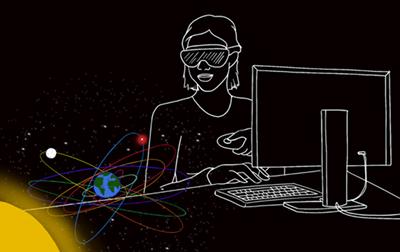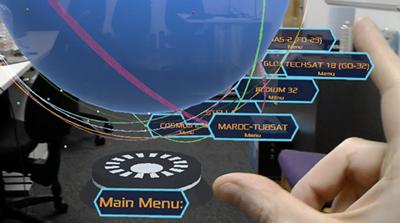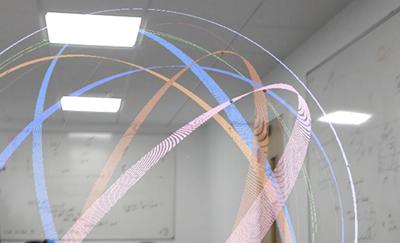Augmented Reality for Space Science – Exploring Game Design Thinking in VR and AR for scientific data visualization
Virtual Reality (VR) and Augmented Reality (AR) can be beneficial in the visualization and analysis of abstract and/or high-dimensional data, but suffer from high pre-processing requirements. In scientific fields, visualizations are often hard-coded for one specific dataset. Although commercial packages exist, they often lack the complex analysis pipelines required for scientific analysis. This project aimed at providing a list of recommendations through the implementation of a prototype utilising the most feasible technology to visualize data in new emerging digital/hybrid spaces. For instance, VR allows 2D, 3D and 4D data to be visualized more readily and it can be flexible to move across different types of analyses.

This project emerged as a collaboration between Winchester School of Art (WSA) staff (Dr Vanissa Wanick and Dr James Stallwood from the Creative Computing Group) and Dr Alexander Wittig (principal investigator) and Jack Tyler (PhD student) from the Astronautics department at University of Southampton. Rob Penn from iSolutions and Jess Castle (WSA BA Games Design & Art graduate and former NUCLEOLUS Designer) were also part of the team.
The project was funded by the UK Space Agency (UKSA) in 2018 and completed in 2019.
The project had initially two use cases: one to support mission analysis and orbit visualization and the other to monitor African Flood and Drought. The team has decided to implement the first case (orbit) as an example (see Figure 1).

During the project, the team also analysed the role of interactive components, including gestures and sound. As a hybrid space, the “real” world is also part of the “user interface”; thus, new design challenges emerged. The team also recommended the use of games design thinking during the design process. This influenced the choice for data representation, which borrowed elements from Heads-Up Display (HUD) components of the game interface. The prototype developed in this project (Space AR) demonstrated the feasibility of using AR and VR for scientific data visualization (see Figures 2 and 3).

By the end of the project, it was recognised the potential for outreach activities using the Space AR tool. The team also highlighted that the use of AR and VR for data visualization is still in its infancy when dealing with decision-making and real-time analysis. When the team tested the prototype, scientists mentioned that the main issue was accessibility.
The project also provided a great opportunity to enhance collaborative work across different disciplines. The team hopes to continue working together, exploring synergies between the Creative Computing group and the Astronautics department
Creative Computing Group contact for more information and collaboration:
Dr Vanissa Wanick (v.w.vieira@soton.ac.uk)
Dr James Stallwood (J.E.Stallwood@soton.ac.uk)